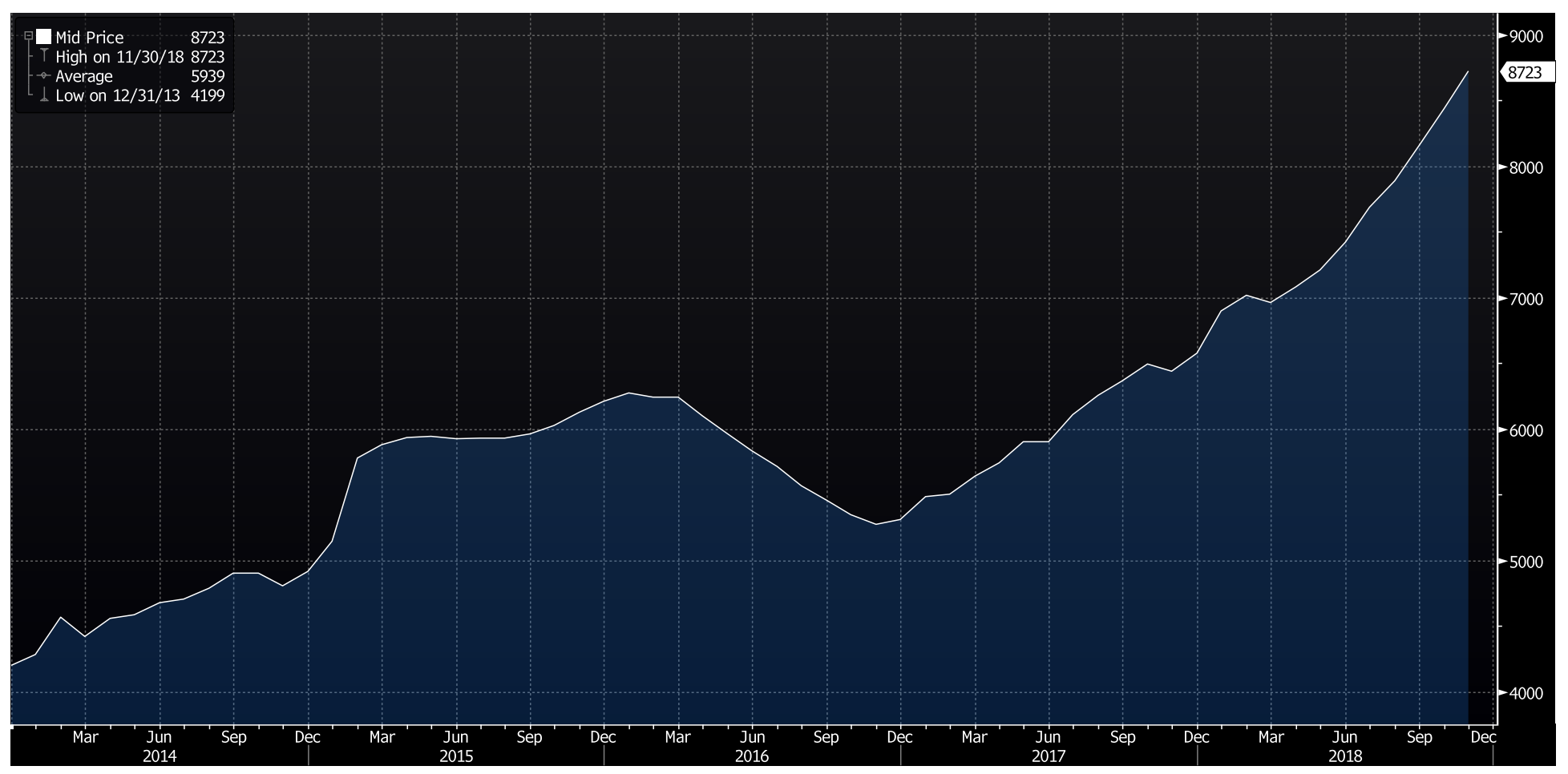Can the ASX’s American frackers survive $US50?

Questions are being asked about whether shale producers can survive the sub-$US50 a barrel oil price, but among those which can may be a handful of ASX companies.
Stockhead monitors 14 companies which have operations in US shale or unconventional oil and gas.
Of these, we confirmed breakeven prices for eight of those based on their own statements on the topic. Investors must be aware that one company’s breakeven prices won’t be calculated in the same way as another’s: they may or may not include other exploration costs, relate to full lifecycle of the area, licenses, and other costs.
The other six did not respond to queries before publication.
Sundance Energy (ASX:SEA) said in December its Eagle Ford portfolio — one of the most prolific and established shale oil and gas locations in the US — could deliver a breakeven price of $US30.
88 Energy (ASX:88E) originally said in mid-2016 their HRZ shale project in Alaska would be feasible to develop at $US27/bbl at the low cost end up to $US68/bbl, with the mid-case at $US39/bbl.
Brookside Energy (ASX:BRK) say breakeven for their Anadarko shale prospects are between $US29-43 a barrel.
Eon NRG (ASX:E2E) said in August that it lifted the economics of the Powder River Basin to the point where breakeven is between $US30 and $US50 per barrel of oil in several formations.
Elk Petroleum (ASX:ELK) has a range of breakeven targets, ranging from $US10 up to the high $US50s and even $US66 for its Anadarko properties.
Fremont Petroleum (ASX:FPL) chairman Guy Goudy told Stockhead their current breakeven price is $US50, as they’re expanding and drilling two deep wells, but if necessary they can cut exploration costs and survive at $US30.
Winchester Energy (ASX:WEL) set out a targets in 2017, placing a $15.60 price on its Permian wells.
Freedom Oil and Gas (ASX:FDM) company secretary Andrew Crawford says they are aiming for $US33-$US35.
This is how they can make money
Shale producers survived the last oil price drop, in 2014, by making their operations more efficient and rapidly adapting new technologies.
Morgans senior analyst Adrian Prendergast says this time, the ability to survive lower oil prices will vary from region to region.
Market researcher Platts puts the Power River Basin breakeven oil price at $US45.92/bbl compared to roughly $US31/bbl on average in the Permian and $US34.52/bbl in the Eagle Ford Shale of South Texas.
- Subscribe to our daily newsletter
- Bookmark this link for small cap news
- Join our small cap Facebook group
- Follow us on Facebook or Twitter
Companies operating in frontier locations, such as Alaska, have more room to change the economics of a project by introducing best practices developed elsewhere, Mr Prendergast told Stockhead.
But for those working in established areas such as the Permian or Eagle Ford regions, the cost transformations have already occurred.
The opportunity there is that the cost base is well defined, making planning more easy.
He believes Sundance, a company he covers in his research, is in a strong position because it has defined costs and high quality locations, and they can start looking at economies of scale from the beginning, rather than having to start small and build.
Prices ain’t coming back soon
Mr Prendergast isn’t seeing any changes yet in rig numbers and drilling activity, two metrics often used as markers of the health of the industry, but points to another figure that shows the price drop is starting to bite.
The number of drilled but uncompleted wells (DUCs) has grown steadily in the last two years.
In 2017, it was due to infrastructure constraints in the Permian — there simply weren’t enough pipes to get oil out — but that figure accelerated late last year, a factor Mr Prendergast puts down to oil prices.

Access to capital is likely to become an issue in 2019 as well, as market sentiment turns south.
WTI peaked in October 2018, before heading sharply downwards.
The US oil price, WTI or West Texas Intermediate, was sitting around $US48 ($67.35) last night, yet many analysts have picked $US50 as a crucial threshold for shale companies in the US.
An analysis of June quarter results by Reuters analyst John Kemp in 2017, a year when oil prices had started to rise on the back of OPEC production cuts, found that $US50 was the price most companies needed to break even.
This week analysts at Canadian bank RBC have dropped their WTI price target for 2019 from $US76 to $US56, while last week ratings agency S&P dropped theirs to $US50.
| Ticker | Name | Price Jan 8 | 6 month % change | 1 year % change | Market cap |
|---|---|---|---|---|---|
| TPD | TALON PETROLEUM LTD | 0.2c | -0.6 | -0.75 | 2.5M |
| EEG | EMPIRE ENERGY GROUP LTD | 1.4c | -0.53 | 0.08 | 34.7M |
| TMK | TAMASKA OIL & GAS LTD | 0.1c | -0.5 | -0.67 | 1.96M |
| SEA | SUNDANCE ENERGY | 40c | -0.45 | -0.56 | 261M |
| FDM | FREEDOM OIL AND GAS LTD | 16.5c | -0.42 | -0.45 | 150.8M |
| ELK | ELK PETROLEUM LTD | 4.9c | -0.41 | -0.35 | 81.3M |
| ABL | ABILENE OIL AND GAS LTD | 0.3c | -0.4 | -0.7 | 1.6M |
| FPL | FREMONT PETROLEUM CORP LTD | 0.6c | -0.33 | -0.14 | 7.4M |
| OEL | OTTO ENERGY LTD | 4.3c | -0.3 | -0.26 | 75M |
| ATS | AUSTRALIS OIL & GAS LTD | 33c | -0.27 | 0.27 | 282.2M |
| 88E | 88 ENERGY LTD | 2c | -0.18 | -0.3 | 114M |
| BRK | BROOKSIDE ENERGY LTD | 1.3c | -0.07 | 0.08 | 10.9M |
| E2E | EON NRG LTD | 1c | 0 | 0 | 4.1M |
| HE8 | HELIOS ENERGY LTD | 13c | 1.36 | 0.94 | 191.3M |
| WEL | WINCHESTER ENERGY | 1.8c | -0.25 | -0.8 | 8.24M |
UNLOCK INSIGHTS
Discover the untold stories of emerging ASX stocks.
Daily news and expert analysis, it's free to subscribe.
By proceeding, you confirm you understand that we handle personal information in accordance with our Privacy Policy.








